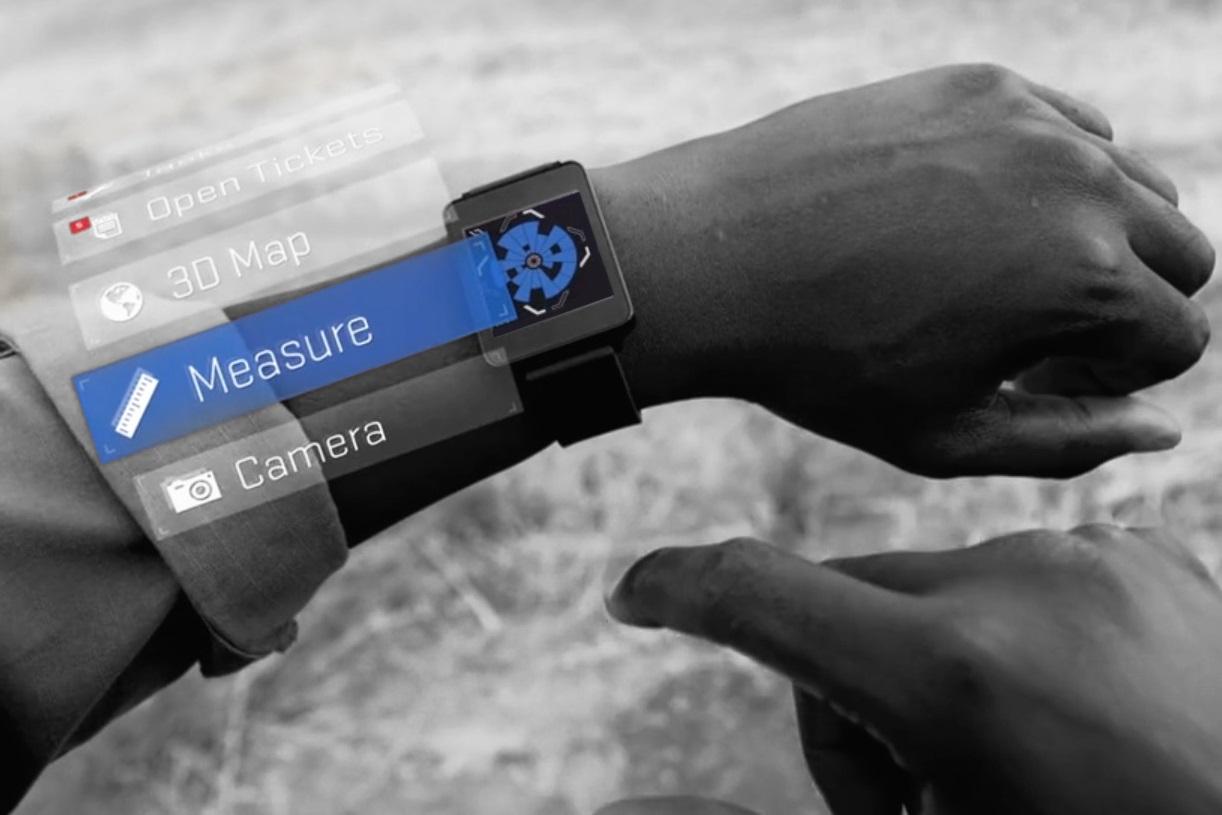
In reality, wearables stretch from the weird and ostensibly useless — Necomimi’s Brainwave cat ears leap to mind — to the inherently useful, innovative, and carefully designed, like the DAQRI Industrial Smart Helmet Helmet.
Why Daqri elected to call it a helmet confused this writer a bit — maybe it’s just because of this wearable’s shape. Intended for use on work sites, the Daqri replaces the traditional hard hat even though it looks like a Tron motorcyclist’s costume (which is pretty cool). Daqri pitches it as the first “human machine interface,” so maybe this is another one fit for Robocop.
Daqri’s smart hard-hat uses augmented reality to translate the environment around the wearer into something that can be easily quantified. In other words, the primary use is to observe the world around you, instead of monitor you or your body as most wearables do. With 360-degree navigation cameras, a high-resolution depth sensor, and an inertial measurement tool, the hard-hat tracks movement and displays a real-time overlay of a graphical model over whatever you’re looking at on the dual-screen HD display, which is protected by clear visor.
The hard-hat supports HD photography and video recording, 3D mapping, and alphanumeric capture — that last makes it possible for the system to read instrument data and signs around you. Combine all of that with the Intellitrack software, which can be taught to recognize specific tools, equipment, or products, and you get one of the most advanced personal object recognition and tracking systems available.

Imagine an inspection, for example. Using a model of the work environment, you can immediately log info about what you see using digital markers, without additional steps. This also works for inventories, making clipboards a thing of the past. The company’s Intellitrack software will scan every item and tool and form a digital list for you. No more annoying checkmarks. It can also locate lost items — hopefully not at an employee’s house. Or consider it in the framework of a construction site. Intellitrack can compare 3D models of the real site to the plan, and let you know if the build is moving along on schedule.
Industrial 4D studio is the major software used to manage the information picked up by the Daqri smart helmet (besides the obligatory iOS and Android app). This lets multiple users have access to the same data, making it easy to manage a whole team across widespread work sites. With the Studio, you can change the content framework to fit the individual, since every member of the team might not need the same info. Daqri provides industrial apps designed to bring together existing hardware and software, in addition to manipulating them via other smart technology, like smart watches (yet another possible use for that new Apple Watch).

With the Daqri smart helmet you can issue work instructions that are more clear and immediate than written memos or task lists. This can cut down on errors and speed up productivity. The applications for this technology are far reaching; the recording capabilities would likely do well for quality assurance, training, and insurance purposes. With the Studio authoring tool and alphanumeric capture, you can incorporate safety locks related to specific readouts: If certain stats aren’t in a safe range, the work can’t proceed. This assures that steps are followed as they should be and can make for a safer workplace.
Engineers, architects and project managers of all kinds would likely find this a life-saver, sometimes literally.
Editors' Recommendations
- Wyze Lamp Socket turns any dumb light bulb into a smart one
- Omne Eternal safety-first cycling helmet uses the power of light to charge up
- Australian Forcite MK1 smart motorcycle helmet is coming to the U.S.


